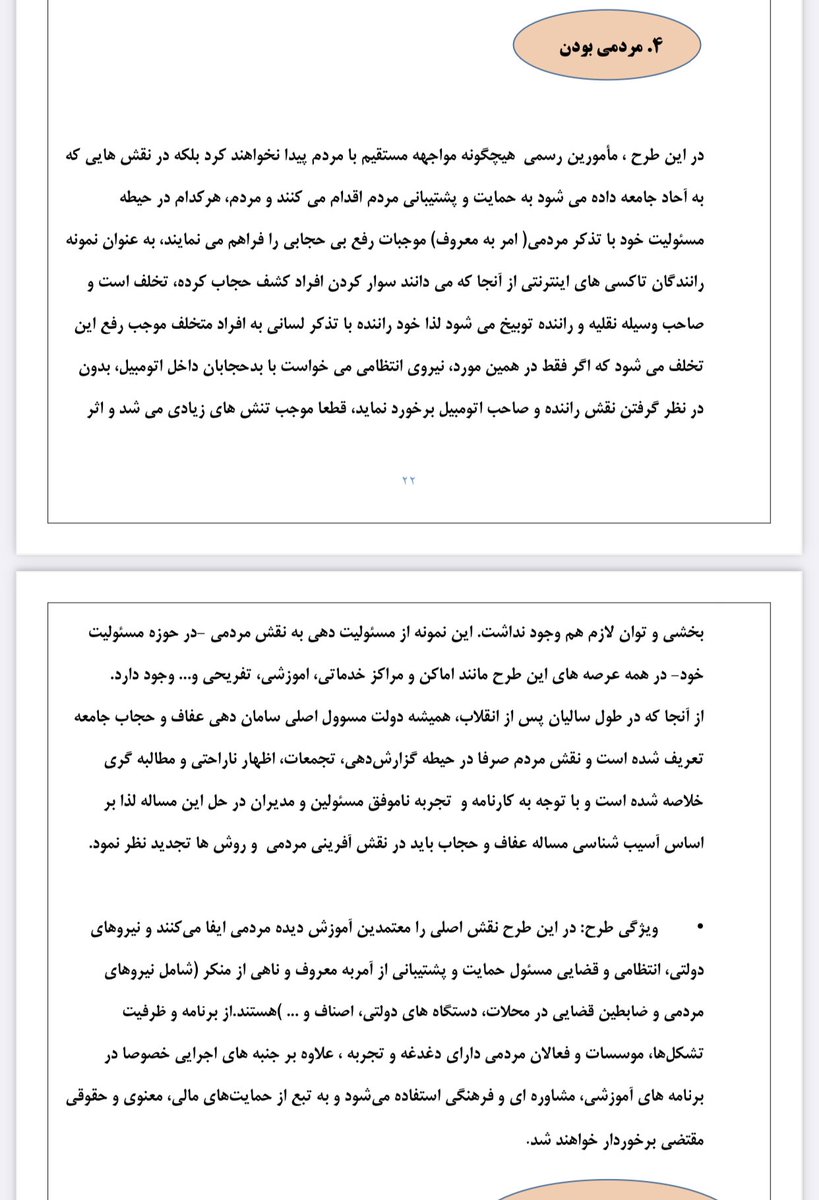1. 拉什托,阿姆魯貝‧馬魯夫總部的《頭巾與貞潔計畫》:根據該政策方案作者提供的統計數據*,可以說,這個社會在強制佩戴頭巾的問題上呈現出兩極分化的局面。他們提出了相互矛盾的解決方案,旨在控制人與人之間的對抗,結果導致社會分化加劇,民眾信任度喪失。
2. 如果你看一下同一份報告從ISPA的調查中得出的數據,你會發現58.5%的人不同意「穆斯林可以不戴頭巾」的說法。這意味著41.5%的人表示同意。 (從統計學角度來看,40%的人口比例具有重要意義。樣本量來自ISPA網站)
3. 值得注意的是,ISPA 的調查並未提及這些人認為社會中有多少人是穆斯林。這意味著,即使有 58.5% 的人參與了這項調查,他們也不認為社會應該戴面紗,也不認為應該將頭巾作為一項法律來強制執行。
4. 可以發布幾條關於所呈現的統計數據和挑選項目結果的推文。 - 挑選意味著,就像挑選一樣,宣布不充分的統計數據,通常證實我們的觀點:
5. 讓我們回到該計劃提出的解決方案。其中包括現金罰款,並將罰款範圍擴大到同事和戶主,以及對他們周圍的人造成社會/經濟剝奪。但在此之前,讓我們先陳述一個關於伊朗社會的事實。
6. 社會資本趨勢表明,伊朗社會在宏觀信任指標方面呈現兩極化。高信任度和低信任度越接近100,社會就越兩極化。本研究的兩極化程度分別為93和95。大多數指標下降,更多機構的信任度接近100。
7. 但這些運動也表明,至少在1990年代中期之前,伊朗的微觀信任指標(即人們對他人的信任)處於良好狀態。伊朗的社會資本在於人與人之間微觀層面的關係。宏觀信任的下降為新政權鋪平了道路,但是!微觀信任的下降 /
8. 微信任的衰退導致社會喪失維護集體認同的能力。 ——無法接受國家認同作為集體認同的社會的例子有剛果和阿富汗——在這種情況下,即使是獨裁政府也無法穩定。以下是其他方面:
9. 但問題不僅存在於條件極端的國家。例如,看看像智利這樣的國家政治與社會信任之間的關係:
10. 這項政策方案旨在對人民施以約束,以造福人民。罪犯周圍的人(同事、部門主管等)必須為此付出代價。儘管從法律角度來看,這極具爭議——至少幾百年來,人類一直在努力將懲罰限制在行為本身和個人身上——
11. 從制度和社會層面來看,它要達成的目標是製造人與人之間的衝突,加深社會分化。而這發生在以下兩種情況:1. 社會本身已然兩極化;2. 整個社會面臨信任危機,呈現兩極化。
12. 不戴頭巾的經濟處罰(這本身就頗具爭議)遠不如該計劃中提出的擴大社會差距的安排重要。附註:此評論絕不支持該計劃的其他部分,只是不認真對待它是挑撥人與人之間關係的副作用。





